Q1. What is the Objective of FSRA?
A1. The objective of FSRA is as follows:
The objective of a fire safety risk assessment is to systematically identify potential fire hazards, evaluate the associated risks, and implement measures to reduce the likelihood of fires occurring and minimize their impact on people, property, and the environment.
Q2. What reference is commonly used for FSRA?
A2. The commonly used reference for FSRA study is as follows:
- NFPA 551 This guide provides assistance in evaluating the appropriateness and execution of a fire risk assessment (FRA) for a given fire safety problem.
- GOV.UK
Q3. What is the methodology for FSRA?
A3. The methodology for FSRA Study is as follows:
- Identify Fire Hazards – A fire hazard is anything that can start a fire, such as ignition sources or combustible materials. Consider: electrical equipment, smoking, arson, heating, cooking, housekeeping, contractors
- Identify People at Risk – How many people are in the premises? Are there any young, disabled, or lone workers present in the premises?
- Evaluate and Act – How many floors and staircases are in the premises? The number and location of exits? Are fire alarms, fire exit signs, emergency lighting and fire extinguishers needed?
- Record, plan and train – Do you have a clear plan of how you are going to keep people safe from fire? Do your staff know what to do in case of fire? Do you complete fire drills? Are fire safety provisions being maintained?
- Review- Your fire risk assessment needs regular review and updating if there are any significant changes.
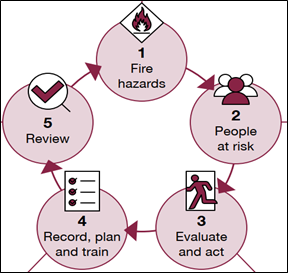
Q4. What is the order of precedence of references for FSRA guideline?
A4. The order of precedence used for FSRA study is as follows:
- NFPA 551 This guide provides assistance in evaluating the appropriateness and execution of a fire risk assessment (FRA) for a given fire safety problem.
- GOV.UK
- As per Client Guidelines
- National & International reference books.
Q5. What are some common fire hazards that should be considered during a Fire Safety Risk Assessment (FSRA)?
A5. The documents required for the FSRA Study include the following:
Common fire hazards that should be considered during a Fire Safety Risk Assessment (FSRA) include electrical faults, combustible materials, flammable liquids or gases, ignition sources such as cooking equipment or smoking materials, inadequate storage of hazardous materials, blocked escape routes, inadequate maintenance of fire safety systems, and potential sources of arson.
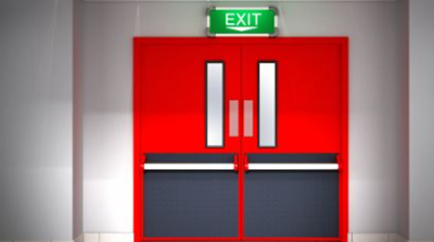
Q6. What are the documents required for the FSRA?
A6. The documents required for the FSRA Study include the following:
- Fire Safety Plan / Emergency Response Plan
- Department wise SOP
- Overall Site Layout
- Department and Shift wise manpower
- Existing Escape Route Drawing
- Existing Fire Alarm System Drawing
- Present Fire Exit Signage layout
- Present Emergency Exit layout
- Existing Fire Extinguisher Details
- Existing Fire Monitor Details
- Existing Sprinkler system Details
- Existing Mock Drill schedule
- Existing Training Matrix and monthly Training Plan

Q7. What are documents deliverables for FSRA?
A7. The documents deliverables for FSRA Study are as follows
- Executive Summary
- Document Review
- Submission of terms of reference
- FRA Methodology
- Hazard Identification / Sources of Fire Hazard
- People at Risk
- Escape Route Audit Report
- Fire Alarm Audit Report
- Fire Exit Signage Audit Report
- Emergency Lightning Audit Report
- Fire Extinguisher Audit Report
- Water Monitor Audit Report
- Sprinkler Audit Report
- Ignition Control safeguards
- Reference
- List of tables
- List of appendix
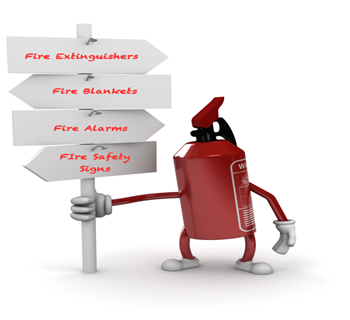
Q8. How should the findings of a FSRA be documented and communicated?
A8. FSRA is documented and communicated in following ways:
The findings of a Fire Safety Risk Assessment (FSRA) should be documented in a comprehensive report that includes details of identified hazards, assessments of their likelihood and potential impact, recommendations for mitigating risks, proposed improvements or additional measures, and an action plan with timelines for implementation. This report should be communicated to relevant stakeholders, including building occupants, management, and regulatory authorities, and appropriate training should be provided to ensure understanding and compliance with the recommended measures. Additionally, the report should be reviewed and updated regularly to reflect any changes in fire risks or mitigation measures.

Q9. What information does the executive summary of a FSRA Report typically include?
A9. Executive summary of a FSRA Report typically include the following:
The executive summary of a Fire Safety Risk Assessment (FSRA) report typically includes key
information summarizing the findings and conclusions of the study.
It typically includes:
Purpose of the Assessment: A brief statement outlining the purpose and scope of the FSRA, including the objectives and goals set for the assessment.
Summary of Findings: A summary of the main findings of the assessment, highlighting significant fire hazards identified, areas of concern, and any deficiencies in existing fire safety measures.
Assessment of Risks: An overview of the assessed fire risks, including their likelihood and potential impact on occupants, property, and operations.
Recommendations: Key recommendations for mitigating identified risks and improving fire safety, such as installing or upgrading fire detection and suppression systems, implementing fire safety training programs, improving means of escape, and addressing any deficiencies in building construction or layout.
Priority Actions: Identification of priority actions that should be taken to address immediate or high-risk concerns, along with suggested timelines for implementation.
Conclusions: A summary of the overall conclusions drawn from the assessment, including any overarching themes or trends observed and the overall effectiveness of existing fire safety measures.
Q10. What are some challenges organizations may face when conducting a Fire Safety Risk Assessment (FSRA), and how can they overcome them?
A10. Challenges organizations face when conducting a FSRA is as follows:
Some challenges organizations may face when conducting a Fire Safety Risk Assessment (FSRA) include limited resources, lack of expertise or training, difficulty in accessing certain areas of the building, and resistance to change from stakeholders. To overcome these challenges, organizations can allocate sufficient resources and budget for the assessment, engage qualified fire safety professionals or consultants, leverage technology for data collection and analysis, collaborate with relevant stakeholders to gain support and cooperation, and communicate the benefits of the FSRA in enhancing fire safety and protecting lives and property.
Q11. What is the Comment Resolution Sheet?
A11. The meaning of Comment Resolution Sheet (CRS) is as follows
A comment resolution sheet is a document used to track and address comments, feedback, or issues raised during a review process, audit, or evaluation.
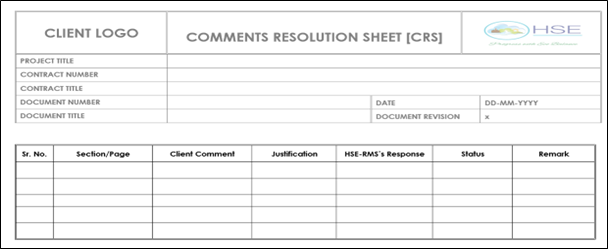
DISCLAIMER
This Blog is provided solely for informational and educational purposes. It is advisable to verify all information presented and consult with appropriate experts or professionals before making any decisions or implementing any strategies based on the content of this blog. HSE Risk Management Services Pvt. Ltd. accept no liability for any actions taken or not taken based on the information provided herein.
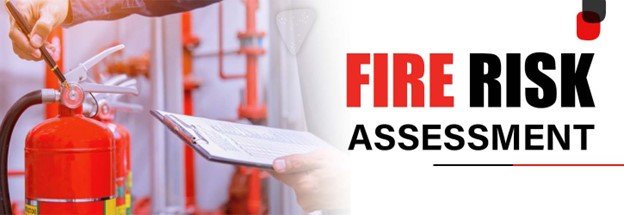
Leave a Reply